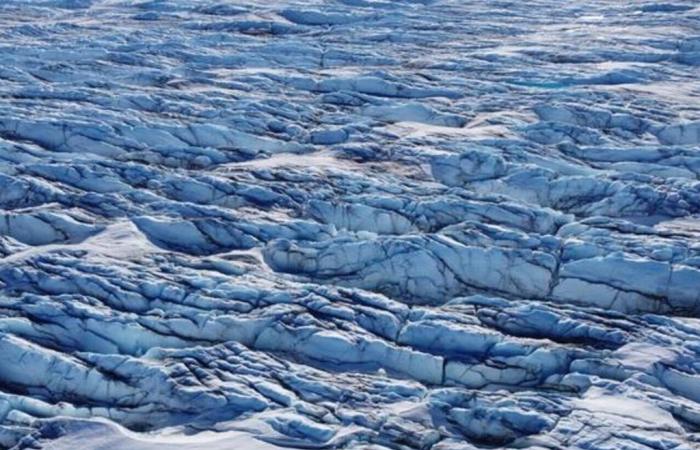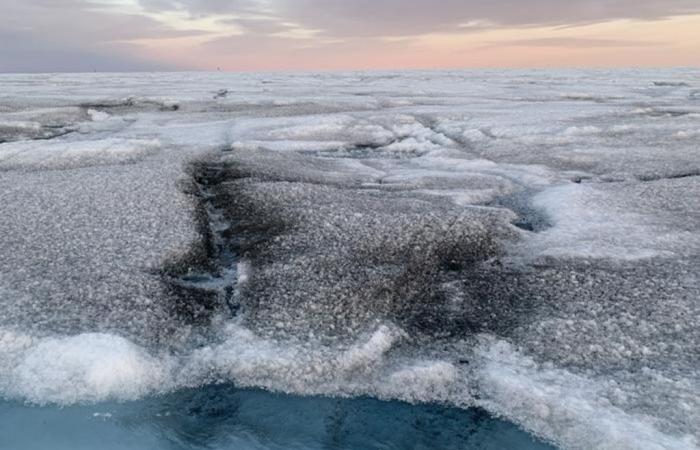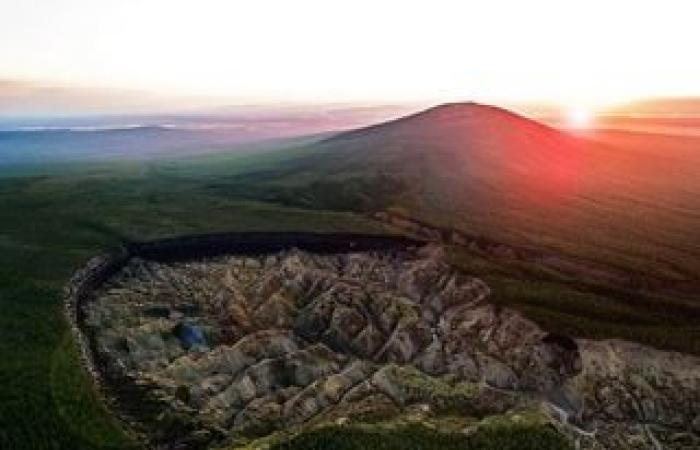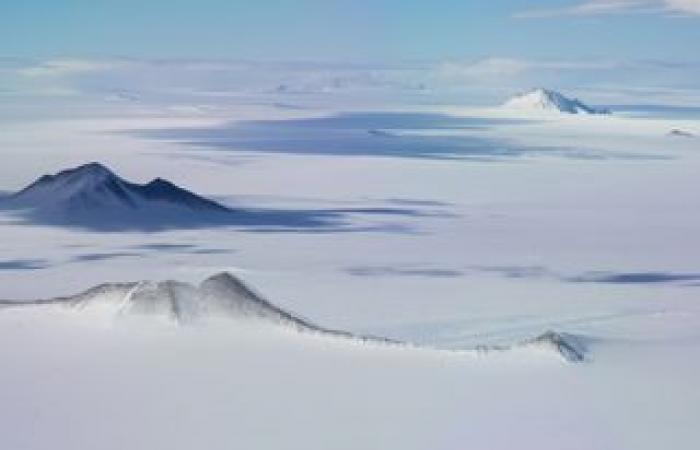In spring, when the sun shines again, algae begin to bloom on the Arctic ice, turning large areas of ice black. When this happens, sunlight is also reflected less, causing the ice to melt. Global warming is exacerbating this effect. Therefore, there is currently greater ice melting.
Snow algae are species of algae that live in fields of ice and snow that slowly melt in summer. They are found in glacial ice in mountains or in sea ice in polar regions.
But researchers at Aarhus University in Denmark may have found a way to regulate the growth of snow algae and stop ice melting in the long term.
Laura Perinia postdoctoral researcher at the Institute of Environmental Sciences at Aarhus University, and her colleagues explain in their study recently published in Microbiom how they found giant viruses that lived alongside algae on the Greenland ice sheet.

Perini suspects that Viruses feed on snow algae and naturally control algal blooms: “We don’t know much about viruses, but I think they could be useful in mitigating ice melt caused by algae blooms.”
Giant viruses versus normal viruses
Normal viruses are 20 to 200 nanometers in size, while bacteria are 2 to 3 micrometers in size. Giant viruses, however, grow to a size of 2.5 micrometers, which is larger than most bacteria. But giant viruses not only have a larger shell compared to normal viruses.
Global concern over rapid growth of ‘Gate to the Underworld’ in Siberia

Its genome is also significantly larger. For example, bacteriophages (viruses that specialize in bacteria) have between 100,000 and 200,000 characters encoded in their genome. Giant viruses number around 2,500,000.
Although the viruses are huge, researchers have only been able to identify them through DNA analysis. “We discovered the viruses by analyzing all the DNA in the samples taken. By analyzing this huge data set in search of specific marker genes, we found sequences that have a high similarity to known giant viruses,” explains Perini.

Giant viruses were first discovered in the ocean in 1981, where they specialized in infecting green sea algae. Later, Giant viruses were also found in soil and in humans. But it’s the first time giant viruses found on the surface of ice and snow dominated by microalgaeexplains Perini.
Just a few years ago this part of the world was considered arid and lifeless. But today we know that various microorganisms live there, including giant viruses
Scientists analyzed samples of dark ice, red snow and melting holes (cryoconite). They found signatures of active giant viruses in both dark ice and red snow. According to Perini, andThis was the first time they were discovered on the surface of ice and snow with high levels of pigmented microalgae.
Are mountains emerging in Greenland due to global warming? A polar explorer reveals his amazement
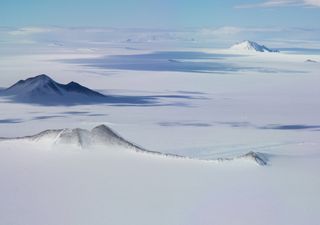
The algae are surrounded by an entire ecosystem: “In addition to bacteria, filamentous fungi and yeasts, there are protists that eat algae, several species of fungi that parasitize them and the giant viruses that we found that infect them,” explains Perini. To be able to biologically control algal blooms, we would need to understand in particular the last three groups: algae-feeding protists, parasitic fungal species, and infective giant viruses.
Unlike most other viruses, giant viruses have a large number of active genes that allow them to repair, replicate, transcribe and translate DNA. But it is still not known why this is the case and what exactly it is used for, says Laura Perini. Scientists continue to study giant viruses to learn more about their exact role in the ecosystem.
Note reference:
Perini, L., Sipes, K., Zervas, A. et al. Giant viral signatures on the Greenland ice sheet. Microbiome, 12, 91 (2024). https://doi.org/10.1186/s40168-024-01796-y

